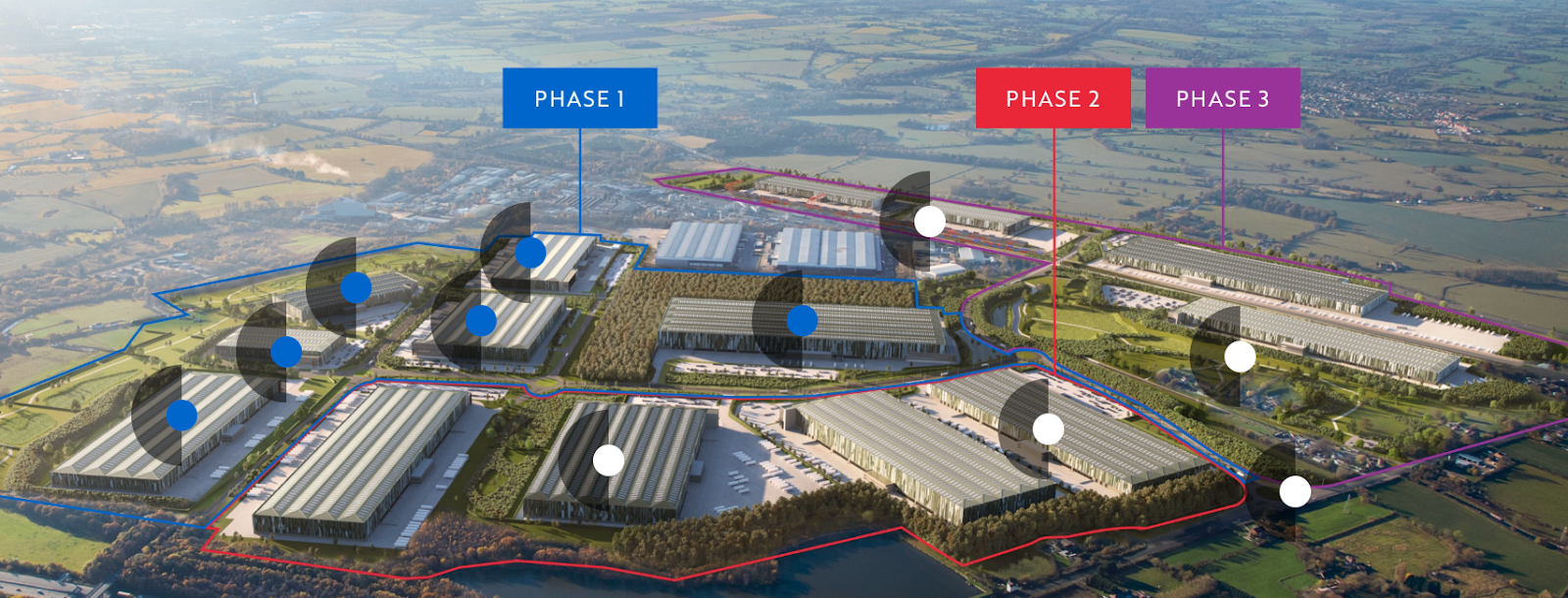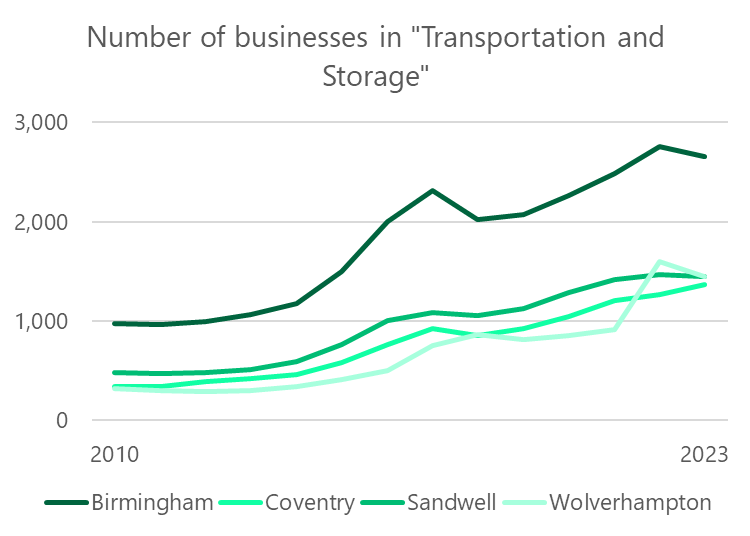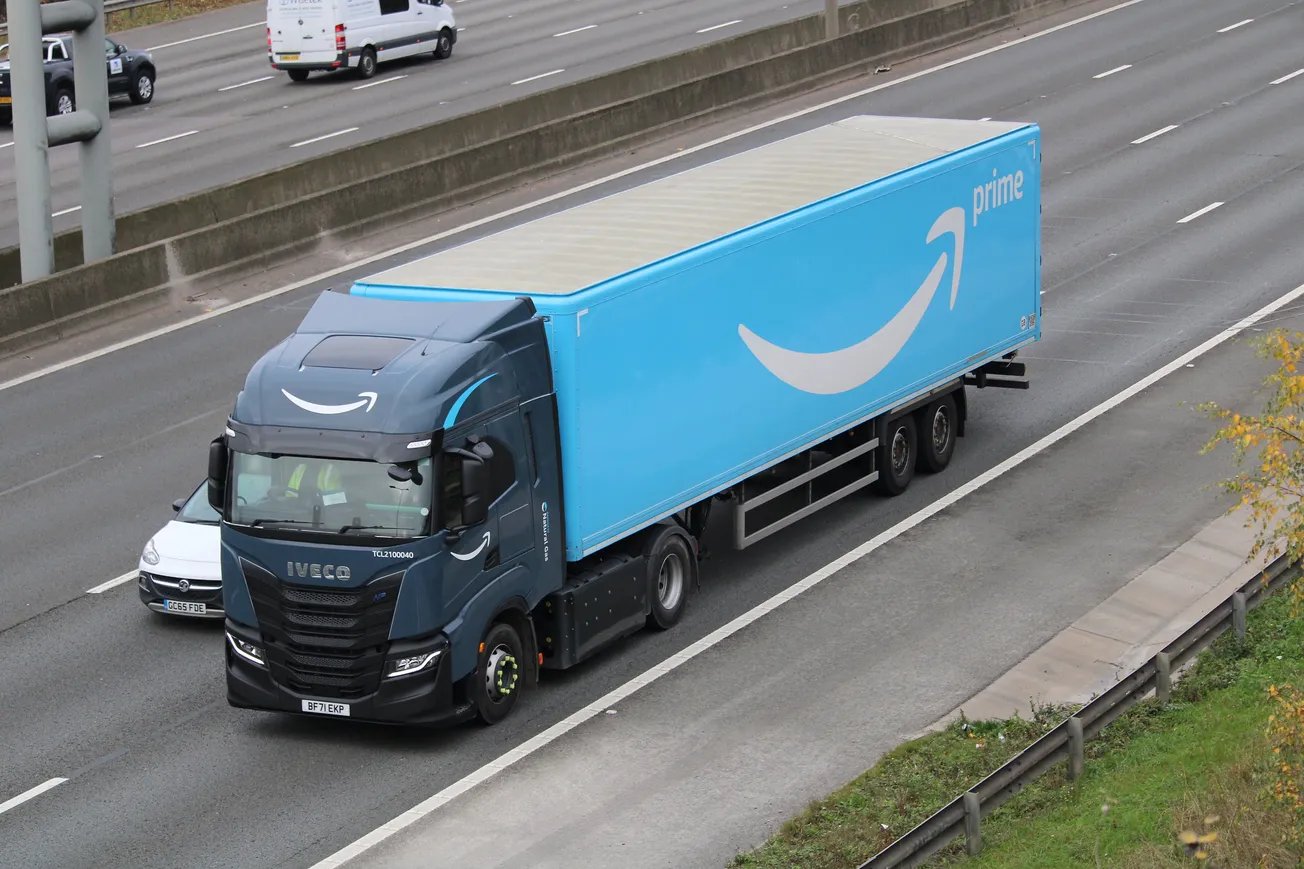About eight miles north of Wolverhampton and four miles west of Cannock lies an unremarkable piece of land. A few fields, some scrubby woodland, and a reservoir where you can go carp fishing, if that’s the sort of thing you enjoy.
But this seemingly unexceptional site is some of the hottest property in the West Midlands right now. As the estate agents tell us, it’s all about location, location, location. Not that you’d necessarily want to live there. But if you make your money by shuttling goods around the country, it is perfect. With the M6 on one side, and the West Coast Main Line on the other, it couldn’t be better.
Right on cue, work is underway on the biggest logistics site in the UK — a whopping 734 acres. It’s so large, it needed its own parliamentary act (The West Midlands Rail Freight Interchange Order 2020) to be brought into existence. It’s a huge investment, backed by a Canadian pension Fund (The Ontario Municipal Employees Retirement System), who are obviously confident they’ll be getting their money back.

But while the “West Midlands Interchange” (or WMI) is of a different order to anything we’ve seen before, it’s really only the culmination of a story that’s been building for over a decade now. Quietly, without any fuss, the West Midlands has birthed a vast logistics industry — posing big questions about how we use our land and what kinds of jobs we want here. And really, it’s just beginning.
But why here, and why now? For that, you need to meet the “Golden Logistics Triangle”.
The Birmuda Triangle
The idea of the Golden Logistics Triangle has been in the air since some time in the 1980s. It was originally used to describe a small area around Magna Park near Lutterworth, where businesses were judged to have very strong connectivity. It has since expanded to include a wider area of the East Midlands, and now (depending on who you ask) could include Birmingham, or even Yorkshire.
(It’s easy to be sceptical about these spatial concepts. The world of policy jargon is chock-a-block with them; clusters, corridors, arcs — they’re normally fairly spurious. My home city of Norwich claims to be part of a “Norwich-Cambridge tech corridor”, but I’ve driven between Norwich and Cambridge, and really, it’s mostly fields.)
However, there’s now a bit more science behind these claims. The Office for National Statistics have crunched the numbers to work out where, if you were looking to build a warehouse for your customer deliveries, the optimum place would be. They’ve got there by looking at which areas are within a four-hour drive of 90% of the British population.

That optimum place is right here (anywhere within the golden logistics triangle). Admittedly, it’s not very triangular. But it’s definitely here.
The local statistics on the sector show massive growth. Take the number of businesses. In 2010, Birmingham had just under 1,000 businesses in the “Transportation and storage” sector. By 2023, that had soared to over 2,600. Other local authorities in the West Midlands — such as Coventry, Sandwell, and Wolverhampton — have also seen big rises. It’s not the kind of glamorous sector that tends to get talked up, but it is one seeing big-time growth.

It’s a similar story for employment, where in Birmingham alone around 6,000 more people were working in the transport and storage sector in 2022 than in 2010.
So what’s going on? The big underlying driver of all this business growth is the same thing that’s killing off other businesses in town centres: online shopping. As a nation, our online shopping habit is voracious. Currently about one in four retail pounds are spent online, a proportion that has steadily grown over two decades, spiking in the pandemic.
The West Midlands is riding the crest of that wave. As the ONS work shows, we’re very well connected — with good links to the South West, Wales, North West, Yorkshire, and even Scotland. And, of course, land here is a lot cheaper than in and around London. And while bigger companies will tend to have multiple distribution sites, they’ll generally want to put one somewhere in the West Midlands.
Blessing or curse?
So should we be delighted, devastated, or merely disinterested? This is where it gets thorny.
Let’s begin with the case against. Firstly, it’s no surprise that the growth in transport and storage businesses has been accompanied by a big increase in the number of lorries driving around the area. In Birmingham, for example, the number of miles being driven by HGVs on the roads has risen by 35% — from 99 million in 2010, to 134 million in 2022 (the figure for Great Britain as a whole is only 6%). That’s the fourth biggest percentage increase in the country — with Walsall, Telford and Wrekin, Coventry, and Sandwell making up the other top five (another sign that the West Midlands is leading the country here). Of course, that’s causing a significant negative impact on local road traffic and air quality.
Against that, there’s the argument that if, as a nation, we all want to be able to get things very quickly when we order them online, they’re going to have to come from somewhere. If the West Midlands is the most efficient location, then from the UK perspective it’s better to have the sites here, minimising the total HGV miles driven. On this view, the fact that we have to bear more of the costs is an unfair, but unavoidable accident of geography.

The bigger question, perhaps, is how we transport goods in the first place. Rail freight is much less damaging for the environment (especially if carried by electrified rail) and interferes less with our daily lives. (Germany is trialling electrified lorries with overhead cables, which have yet to catch on here). But to move stuff by rail you need extra infrastructure for loading and unloading. This is a central part of what’s being proposed by WMI, and in fact the order that gives them permission to build requires the rail freight interchange to be built relatively early on in the site’s development.
But a lot of the freight from WMI will still go by road. A representative for WMI told us: “We are designing the park so that 12.5% of the site could be rail sided, whilst all units across the site will be designed with access to the SRFI [Strategic Rail Freight Interchange] possible.”
Rail freight might also be limited in future by the recent decision on HS2. Although the modelling for the site didn’t include HS2, if it had happened, it would have freed up extra capacity on the West Coast Main Line.
Jobs for the boys
The next question is jobs — a core metric for any politician. The WMI promises that it will generate 8,500 jobs, benefiting people in the Black Country, Staffordshire, and elsewhere in the West Midlands.
Should that be something we celebrate? These roles have often been viewed quite negatively, as relatively unskilled. Adding to that, a number of undercover stories, such as the recent Channel 4 documentary The Great Amazon Heist which went inside the commercial behemoth’s Coventry site, have highlighted poor working conditions in some warehouses. Workers with trackers to monitor them, impossible targets with no time for toilet breaks, short-term contracts and little unionisation; it’s hard to dispute that there are some grim jobs in the sector. It should also be noted that roughly three-quarters of employees in the sector are male — so the extra job opportunities may not be equally felt by all.

But many argue that the bad PR isn’t representative of the sector as a whole. Roles in transport and storage pay around 13% more than the national average. HGV drivers are sometimes considered a “semi-skilled” profession, needing to pass a test, and do 35 hours of training every five years. And the industry is changing: greater automation in warehousing is removing some low skilled jobs, but creating higher-level jobs in managing technical machinery.
The other complaint — these jobs have a very high land take. According to a 2015 government report, a typical office worker requires about 12 square metres of space. But you need to construct 95 square metres for someone working in a national distribution centre. If the aim is to create jobs, it’s not the most spatially efficient way to do it.
The bubble isn’t bursting
When I asked the WMI who their occupiers were going to be they remained tight-lipped. That’s partly for commercial sensitivity reasons, but I also expect they’re happy to bide their time and let interested parties bid up the rent. One thing is clear though: no-one is worried about these sheds lying empty. The demand for this sort of space seems limitless, and they’ve got the jewel in the crown.
Despite that, most readers have probably never heard of the WMI. And I think the reason this boom across the whole sector has had such little prominence is precisely because it’s happening in the places nobody goes. When the delivery driver arrives at your door it’s like they’ve appeared from nowhere. The vast warehouses that contain the stuff we buy are out of sight and out of mind.
But actions in the digital world have consequences in the physical one. Here, at the heart of the Golden Logistics Triangle, we’re seeing more jobs, and more lorries. And with online shopping showing no signs of abating, those trends will only continue.
Do you think the growth of logistics and opening of WMI is good news for our city and region? Have your say in the comments below.








Comments